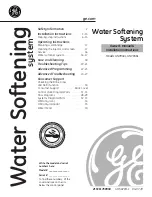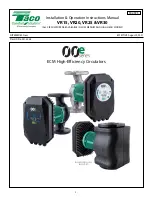
19
Two-stroke
This symbol means LIFTIG ignition. The arc
is established in the following way:
1) The torch is placed so that the Tungsten elec-
trode has contact with the welding spot.
2) The torch trigger must be kept pressed down.
3) The arc is established by lifting the torch, and the
welding process has started. In order to stop the
welding process, the torch trigger is deactivated.
The arc will extinguish after the period of slope-
down time. The torch is held at the welding spot
until after the period of gas post-flow time in order
to protect the welding spot against oxidation.
Four-stroke
This symbol means LIFTIG ignition. The arc
is established in the following way:
1) The torch is placed so that the Tungsten elec-
trode has contact with the welding spot.
2) The torch trigger must be kept pressed down.
3) The arc is established by lifting the torch, and the
torch trigger is deactivated. In order to stop the
welding process, the torch trigger is reactivated.
The arc will extinguish after the period of slope-
down time. The torch is held at the welding spot
until after the period of gas post-flow time in order
to protect the welding spot against oxidation.
Please note! Both HF as well as LIFTIG ignition
cannot be effected until post-flow is finished.
Pilot arc
In this section it is possible to
choose whether the pilot arc
should be activated or not. Connection/disconnection
of this function cannot be changed during the welding
process.
The pilot arc cannot be activated.
The pilot arc can be activated.
Used only in the TIG welding process, a pilot arc is a
weak arc which illuminates the workpiece, and there-
by makes it easier to find the starting point of the
actual welding process.
The pilot arc can be ignited by briefly activating the
torch trigger (less than 0.3 seconds). If activation is
longer (more than 0.3 seconds), the machine
switches automatically to ordinary welding.
Switch from pilot arc to ordinary welding by keeping
the torch trigger activated when two-times TIG-
welding or by long activation (>0.3 seconds) when
four-times TIG or spot welding. The welding process
then continues in normal fashion.
However, after slope-down the machine does not
switch directly to post-flow but to pilot arc again. It is
now possible to continue with a new welding process
by a lengthy activation of the torch trigger (> 0.3
seconds), or to extinguish the pilot arc by a brief ac-
tivation (< 0.3 seconds) of the torch trigger.
The welding process
for TIG welding
The parameters can be
both selected and ad-
justed during welding
Pre-flow
Pre-flow is the period of time for which gas
flows after the torch switch is pressed and
before the HF arc is established, or until the torch is
lifted away from the workpiece in the LIFTIG process.
Variable 0-60 secs.
Start Amp
Immediately after the arc has been
established, the machine regulates the welding cur-
rent to the value stated in the Start Amp parameter.
Start Amp is set as a percentage of the required wel-
ding current and is variable between 0-100% of the
welding current with a minimum value of 5 A.
Slope-up
Once the arc has been established, the wel-
ding process enters a slope-up stage during which
the welding current is increased in linear fashion from
the value stated in the Start Amp parameter to the
required welding current. The duration of this slope-
up time is variable 0-10 secs.
Slope-down
When welding has stopped by activating the
trigger, the machine enters a slope-down stage.
During this stage current is reduced from welding
current to Stop Amp over a period of time called the
slope-down time and variable 0-10 secs.
Stop Amp
The slope-down stage is completed when
the current level has fallen to the value stated in the
Stop Amp parameter. Stop Amp is stated as a per-
centage of the required welding current and is
variable between 0-100% of the welding current with
a minimum value of 5 A.
Post-flow
Post-flow is the period of time for which gas
flows after the arc is extinguished and is variable 3-
20 secs.
Reduced current
When four-times welding a reduced current is
activated by pressing the trigger briefly. This
reduced current is set to a percentage value of the
welding current and is variable between 0-100% of
the welding current with a minimum value of 5 A.
Indication of a welding process
During welding, when adjustment of current is
activated by means of the A-keypad, it is possible to
see the actual phase of the welding process.
Summary of Contents for PILOT 1800
Page 73: ...73 PILOT 1800 2400...
Page 74: ...74 WATER COOLING UNIT PILOT 1800 2400...
Page 76: ...76...
Page 82: ...82 PILOT 1800 2400 VANDK LEMODUL WATER COOLING UNIT WASSERMODUL MODULE HYDRAULIQUE...
Page 84: ...84...
Page 85: ......
















































